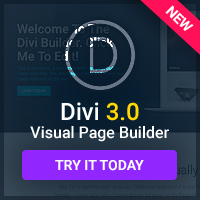Advertising on the web is big business again, but idea behind the revival is quite strange. Back in the dot-com boom days, all ads were graphical, as it was assumed that this was the best way to get people to click through. However, modern ad companies, led by Google's AdSense division, have found that text advertising works just as well as (if not better than) graphical banners. It's this discovery that got advertising on the web moving again. But why does it work so well?
What Does a Text Ad Look Like?
The answer to this question is that they look pretty much like any other link. A typical text ad might look like this:
Buy My Stuff
I have stuff to sell to you. Come buy it.
http://www.example.com/stuff
It's as simple as that: headline, text, URL. The ads usually appear in a ‘block' of three or four, followed by an ‘Ads by' message, but it's just as possible for them to appear on their own. Clicking anywhere in the ad follows the link some text ads even exclude the text and URL parts, making them nothing but a link. One of the good things about the text ad approach is that it solves the ‘banner blindness' problem, where users gradually learn to ignore banner-shaped areas of websites and so don't actually see the ads at all.
Text Ads Annoy No-one.
Text ads are very subtle: they don't jump out at you, animate, open in a new window or make noises. The great thing about them is that their lack of annoyingness is also part of their power: people actually pay more attention to an ad that looks like a useful link than they do to one that looks and sounds like an ad. You get to annoy your users less while making more money from click-throughs, and you get to reduce the amount of space ads take up on your site while increasing their effectiveness. It's win-win.
Lower Ad Costs.
Text advertising also works out well for the advertisers themselves. Previously, to advertise on the web, you had to get a bunch of banners made in different sizes. Each time you wanted to change the message, you needed a new banner. Uploading these banners to the various ad sites was a pain, and the cost of the bandwidth used to serve the ads made the ad rates more expensive to advertisers. There was also a need for ads to be reviewed to ensure that they were suitable for the intended audience.
Text advertising changes this situation, removing a huge number of the costs associated with the whole process of putting ads on a site. Text takes effectively no bandwidth. You can't really produce anything unsuitable in text or, at least, things that are unsuitable can be easily flagged by automatic filters. The whole process of creating an ad and taking it live becomes much easier for the advertisers: lower cost, and with more flexibility to create campaigns at short notice.
What this means for the marketplace is that there has been a shift in who buys advertising: instead of sites having three or four big advertisers, they can now have hundreds of small ones. This lets small businesses advertise when they wouldn't have been able to before, not to mention removing websites' dependency on their advertisers and giving them greater freedom to say what they want to. Again (and this is a pattern with text ads), it's win-win.
Text Ads and Context.
Finally, it's worth noting that the power of text ads doesn't just come from the fact that they're not graphical. It's also important to note that the systems serving the ads pay more attention to context than the old graphical systems did: they can compare the text of the ads to the text of the websites that are being advertised on, to find the best match for the ads in question. This raises click-through rates by making ads highly targeted.
In short, we're moving away from the web full of flashing graphical ads that are mostly irrelevant to what we're reading, towards one with sober text ads that offer us just what we wanted.


